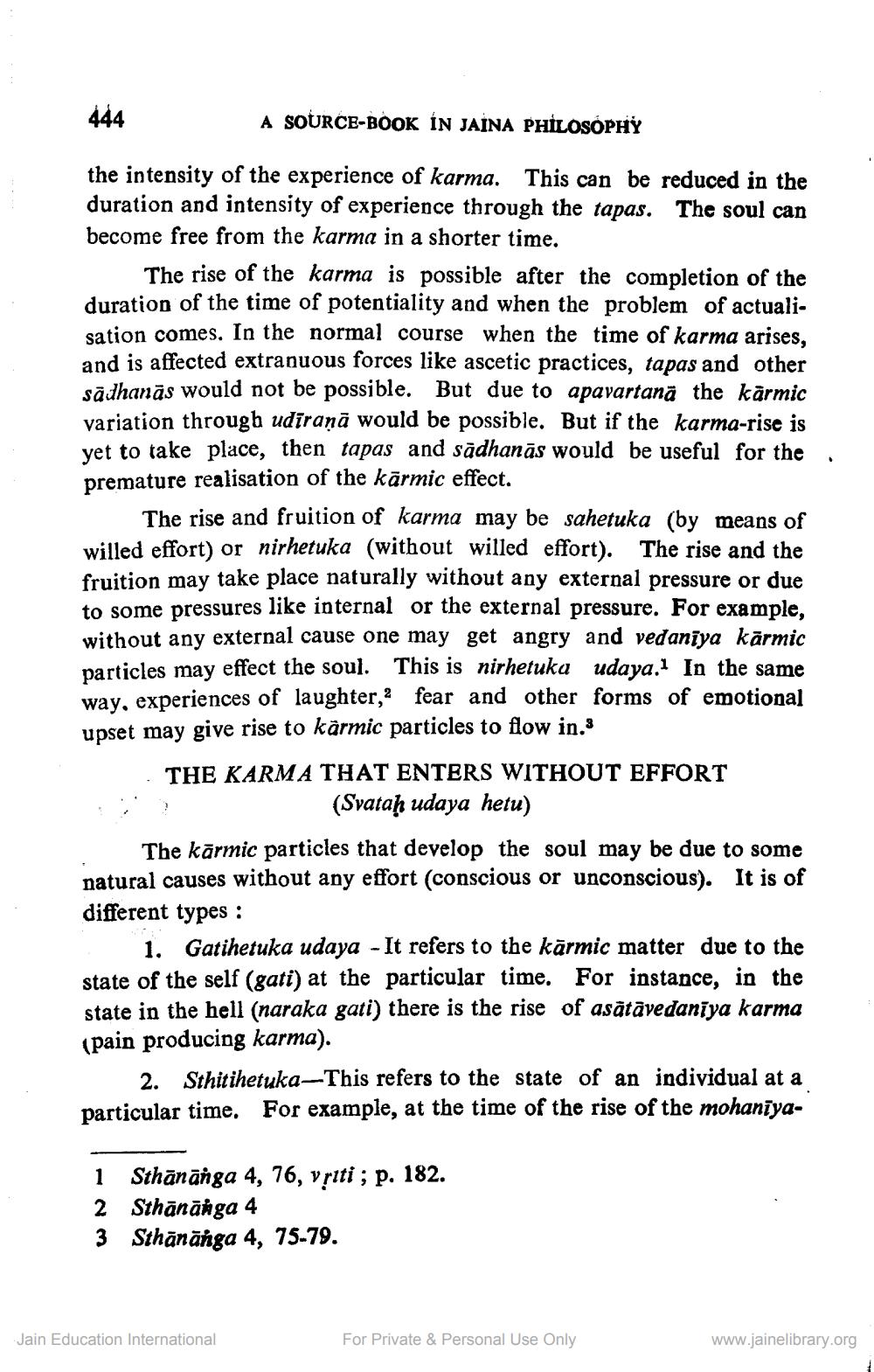________________
444
A SOURCE-BOOK IN JAINA PHILOSOPHY
the intensity of the experience of karma. This can be reduced in the duration and intensity of experience through the tapas. The soul can become free from the karma in a shorter time.
The rise of the karma is possible after the completion of the duration of the time of potentiality and when the problem of actualisation comes. In the normal course when the time of karma arises, and is affected extranuous forces like ascetic practices, tapas and other sādhanās would not be possible. But due to apavartanā the kārmic variation through udīraṇā would be possible. But if the karma-rise is yet to take place, then tapas and sādhanās would be useful for the premature realisation of the karmic effect.
The rise and fruition of karma may be sahetuka (by means of willed effort) or nirhetuka (without willed effort). The rise and the fruition may take place naturally without any external pressure or due to some pressures like internal or the external pressure. For example, without any external cause one may get angry and vedaniya kārmic particles may effect the soul. This is nirhetuka udaya.1 In the same way, experiences of laughter, fear and other forms of emotional upset may give rise to karmic particles to flow in.3
THE KARMA THAT ENTERS WITHOUT EFFORT (Svataḥ udaya hetu)
The karmic particles that develop the soul may be due to some natural causes without any effort (conscious or unconscious). It is of different types:
1. Gatihetuka udaya - It refers to the karmic matter due to the state of the self (gati) at the particular time. For instance, in the state in the hell (naraka gati) there is the rise of asätavedaniya karma (pain producing karma).
2. Sthitihetuka-This refers to the state of an individual at a particular time. For example, at the time of the rise of the mohaniya
1 Sthānanga 4, 76, vriti; p. 182.
2 Sthānanga 4
3 Sthānanga 4, 75-79.
Jain Education International
For Private & Personal Use Only
•
www.jainelibrary.org




